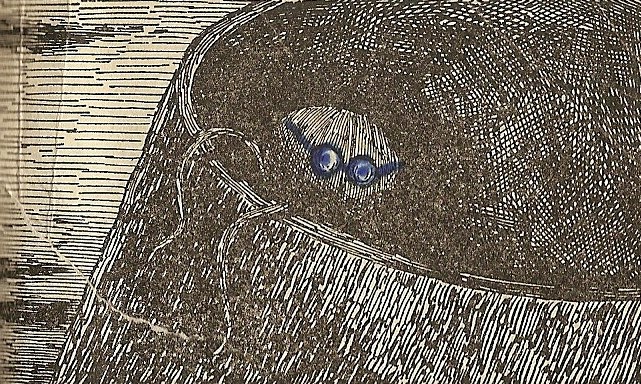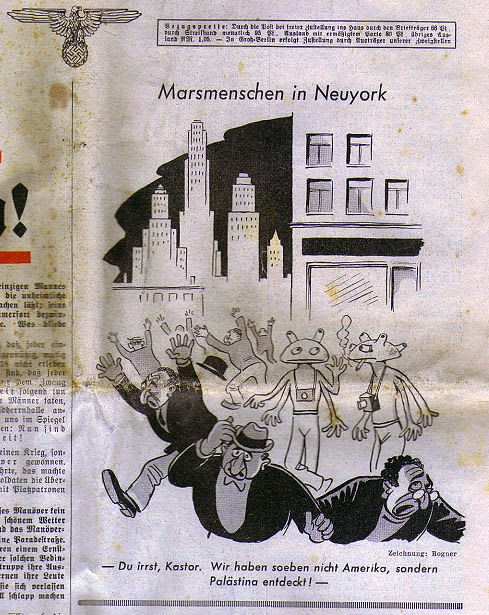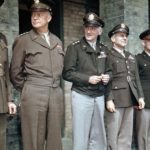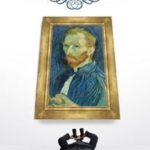(Originally published in Trendline Magazine, November 2000, updated April 2015)
‘FAKE RADIO WAR STIRS TERROR THROUGH U.S.,” or so went the headline on Halloween day 1938. The previous evening, a 23 year old Orson Welles brought the famous H.G. Wells classic The War of the Worlds to life in a New York City studio with his Mercury Theater on the Air, being the seventeenth of the theater’s weekly dramatic broadcasts in their second season. The “effects” of the broadcast have reached truly mythical proportions. It is still considered by many to be the most famous radio broadcast of all time.
Howard Koch, whose credits also include the classic film Casablanca, wrote the script during a six day and night marathon, and went to sleep early the night of October 30, 1938, completely missing the broadcast. The next morning he rose at his usual time and walked down 72nd Street to his barber for a haircut. On his way he heard partial conversations using words like “war” and “panic.” Alarmed, when he finally reached the shop he asked his barber, “are we at war?” The barber smiled and held up a newspaper with the headline “Martian Broadcast Panics Nation.”
Welles’s radio dramatization moved the Martian invasion from outside London, England to the tiny town of Grover’s Mill, New Jersey, not far from New York City. The original H.G. Wells story was barely recognizable, as the radio version hit the listener with rapid fire “special bulletins,” frenzied “eyewitness” accounts, realistic impersonations of government officials, including the Secretary of the Interior complete with a curiously FDR-like voice appealing for “the urgent need of calm and resourceful action,” and of course horrific sound effects. Similar to the original novel was Welles’s use of real locations to add artistic verisimilitude.
Although beginning as a typical evening of dance music programs to soothe America’s war jitters, it rapidly evolved into a series of news bulletins about “several explosions of incandescent gas occurring at regular intervals on the planet Mars.”
Reporter Carl Phillips is sent to Princeton University to interview Professor Richard Pearson (Orson Welles), “noted astronomer.” During the interview Professor Pearson is given a message that a large meteorite has fallen somewhere near Grover’s Mill in central New Jersey. Pearson and Phillips make the trip to the site to find it has already drawn quite a crowd. First Phillips interviews an “eyewitness” of the meteorite’s impact, Mr. Wilmuth, the owner of the farm where it landed. Then one end of the cylinder-shaped thing begins unscrewing from within. It drops off with a loud thump, and the Martians begin to emerge. Strangely enough, Phillips’ remarkable powers of description fail him when describing a living Martian, but what he does say matches them with H.G. Wells’s creatures. Octopus-like, large brown leatherish bulks with coal black eyes, and “V” shaped mouth under a fleshy protrusion, and sixteen tentacles I groups of eight on either side of the body.
The Martians then begin their blitzkrieg by killing nearly everyone in sight with what Professor Pearson, who miraculously survived despite being so close, later described as a “Heat-Ray.” The state militia is called in to contain the Martians, but are routed when the first of the Martian fighting-machines emerge. “7000 men armed with rifles and machine guns pitted against the single fighting-machine of the invaders from Mars. 120 known survivors.”
 |
| Five Martian machines arrive, appearing above the Palisades – while one straddled the Pulaski Skyway. |
The Martians build more machines, decimate central New Jersey and then sweep north towards a panicking New York City. We hear a broadcast from an artillery post that engages the advancing fighting-machines, and even scores a hit on one before the crew is overcome by the Martian’s other diabolical weapon, poisonous black smoke. After the artilleryman are heard choking to death on this black smoke, we are switched to an Army Air Force bomber out of Langham Field as it attacks a fighting-machine. The Martian lifts his heat-ray generator effortlessly and sprays the doomed plane with flames…
Abruptly we are taken to a broadcaster (Ray Collins – Boss Jim Gettys in Citizen Kane) on the roof of his “broadcasting building” in New York City. He reports that the streets and bridges are jammed with frantic human traffic fleeing the coming Martians. His tone of voices colors blood red the picture of Armageddon he is painting.

“No more defenses. Our armies – wiped out. artillery, air force…everything wiped out. This may be the – last broadcast. We’ll stay here to the end. A bulletin is handed me. Martian cylinders are falling all over the country. One outside of Buffalo, one in Chicago, St. Louis, they seem to be timed and spaced.”
“Now they’re lifting their metal hands – this is the end now – smoke comes out, black smoke…drifting over the city. People in the streets see it now, they’re running toward the East River, thousands of them, dropping in like rats. Now the smoke’s spreading faster, its reached Times Square. People are trying to run away from it but it’s no use, they’re falling like flies. Now the smoke’s crossing Sixth Avenue, Fif…fifth Avenue. Uh, a hundred yards away. It’s, it’s fifty feet…uhhhhhhhhh!”
Then a heavy, lifeless thump…
It’s now a little over half an hour into the broadcast, and a confident voice begins speaking. “You are listening to an original dramatization of The War of the Worlds by H.G. Wells.” The broadcast resumes with Professor Pearson as narrator. He makes his way from a little house where he’d been hiding from the Martians at Grover’s Mill, into an utterly deserted New York City.
He wanders around the city describing the silence and desolation for a time, corresponding to the “Dead London” chapter in the original novel, then climbs a small hill around 60thStreet and sees a line of limp and motionless fighting-machines. Flocks of black birds circle to the ground at their feet to peck and tear strips of brown and red flesh from the dead bodies of the Martians. Despite their advanced technology, the Martians had failed to take into account earthly disease bacteria, the sort of bacteria they had either eradicated from their planet, or which had never evolved. In any case, their immune systems were unable to cope with the biological onslaught that human bodies have developed an immunity to over the eons.
Professor Pearson then turns philosophical when he realizes the folly of his previously held persuasion that life was unique to Earth, and gives a Wellsian warning against complacency.
“But now we see further…maybe the destruction of the Martians is only a reprieve. To them and not to us perhaps the future is ordained.”
After the radio play concludes, Orson Welles appears,
“Out of character to assure you that The War of the Worlds has no further significance than as the holiday offering it was intended to be: The Mercury Theater’s own radio version of dressing up in a sheet and jumping out of a bush and saying ‘boo!’ Starting now we couldn’t soap all your windows and steal all your garden gates by tomorrow night, so we did the next best thing. We annihilated the world before your very ears and utterly destroyed the CBS.”
The next morning’s papers shrieked their horror over the previous evening’s events with many stories of terror and panic. The Associated Press gathered specific instances.
From Pittsburgh: “A man returned home in the midst of the broadcast and found his wife, a bottle of poison in her hand, screaming, “I’d rather die this way than like that!”
Indianapolis: “A woman ran into a church screaming, ‘New York destroyed! It’s the end of the world! You might as well go home to die. I just heard it on the radio.’ Services were dismissed immediately.”
Boston: “One woman declared she could ‘see the fire’ and told the Boston Globe she and many others in her neighborhood were ‘getting out of here.’”
There was even an instance of a man climbing to the roof of a building in Manhattan with binoculars and seeing “the flames of battle.”
But the most amusing story to emerge from that night’s panic was of a group of farmers from central New Jersey who set out to combat the Martians with their trusty shotguns. No Martians were found, of course, but they did manage to damage a very terrestrial water tower with buckshot after mistaking it in the darkness for a fighting-machine.
But just how much panic was there – really? Reports of suicides and heart attacks proved unfounded, and reappraisals of other “evidence” of the panic show it to have been much less than many like to pretend it was. Media hype seems to be the real monster here, that and the same age-old American love for urban legends.
Even the evidence of the supposed 40% increase in telephone calls to law enforcement agencies and the local media in New Jersey that night fails to differentiate the types of calls in percentages. Some people simply wanted to know where they could donate blood, some to know where to find casualty lists, some realized the show was a dramatization but were furious that such a realistic production was allowed on the air, and still others sought to congratulate CBS on such a fantastic Halloween program.
Another radio broadcast of The War of the Worldswas performed by the Lux Radio Theater on February 8, 1955, also on CBS, and later rebroadcast over the Armed Forces Radio and Television Service. This particular production was based more on George Pal’s Academy Award-winning 1953 film adaptation of the novel than on Orson Welles’s radio play.
But there are documented instances of genuine and violent panic from radio dramatizations of The War of the Worlds. November 12, 1944, Santiago, Chile. And adaptation with an impersonator of the Chilean Minister of the Interior caused many to barricade themselves into their homes, sent others fleeing into the streets, and even caused a local governor to mobilize the artillery and additional troops. Also a minor scare occurred around Providence, Rhode Island after a 1974 adaptation, and yet another in northern Portugal during 1988.
The most tragic instance occurred in Quito, Ecuador on February 12, 1949. A realistic adaptation was performed that night on a local radio station. In it they convincingly obliterated the neighboring town of Latacunga before turning the invaders towards the capital. Again, “eyewitnesses” were interviewed, including an impersonator of the mayor. The use of real locations gave the broadcast just the right amount of realism to cause a riot in the streets that led to fifteen people being burned to death when the angry mob poured gasoline on the radio station and set it ablaze.
But what of the original? Since the broadcast in 1938 there have been several long playing albums released that contain the entire hour long production, as well as multiple CDs. The Longines Symphonette Society released an LP version during the 1960’s, the jacket cover featuring sensational newspaper excerpts about the panic, as well as artwork by Warwick Goble, drawn for the original serialization of H.G. Wells’s story in Pearson’s Magazine, April through December 1897.

As for the masterminds of the event, H.G. Wells and Orson Welles met publicly for the first time at radio station KTSA, San Antonio, Texas on October 28, 1940. Initially the elder Wells was unhappy with Welles’s dramatization because he felt it distorted the fundamental messages of his book, complacency, and destructive imperialism of a technologically advanced race. Fortunately, by the time of their meeting his dissatisfaction had been mitigated by a curiosity about the stir the broadcast had caused.
During the on-air conversation, Orson Welles talks about Adolf Hitler mentioning the broadcast during a speech in Munich not long after the broadcast. Interestingly, not long after this piece was originally published, while working at Manion’s International Auction House which specialized in historical militaria, I stumbled across a copy of the official newspaper of the SS, Das Schwarze Korps, dated November 10, 1938.
Across the front page was an editorial cartoon titled “Marsmenschen in Neuyork” (Martians in New York), with two camera-carrying Martian tourists strolling through New York, frightening a group of obviously Jewish citizens. The aliens believe they missed New York and landed in Palestine. Ba dum tss.
By the time Wells and Welles met in 1940, World War II had been raging for fourteen months already, and H.G. Wells was high on the Nazi list of banned authors, many of his books already having been burnt in the infamous bonfires at German universities. Wells’s view was pragmatic:
“You aren’t quite serious in America yet; you haven’t got the war right under your chins. And the constant is you construe, you play with ideas of terror and conflict… It’s the natural thing to do until you’re right up against it… Then it ceases to be a game.”
Of course few events in broadcast history have made the sort of impact that Welles’s production made. The lesson to draw from all of this is that you only need to fool a few to make an impact. As society and technology evolve alongside one another, the old formulas for sensationalizing something may no longer work, but history shows new formulas will be found. 20/20 historical hindsight may serve us well in this regard, but how many of us are truly paying attention?
References:
The War of the Worlds original Orson Welles/Howard Koch scripted CBS/Mercury Theater on the Air Broadcast.
The Lux Radio Theater production of The War of the Worlds LP, including recording of the Wells/Welles conversation at KTSA, San Antonio.
“The Martian Panic Sixty Years Later, What Have We Learned?” by R.E. Bartholomew, Skeptical Inquirer, November/December 1998.
Images public domain, collected from Wikipedia.

 “No more defenses. Our armies – wiped out. artillery, air force…everything wiped out. This may be the – last broadcast. We’ll stay here to the end. A bulletin is handed me. Martian cylinders are falling all over the country. One outside of Buffalo, one in Chicago, St. Louis, they seem to be timed and spaced.”
“No more defenses. Our armies – wiped out. artillery, air force…everything wiped out. This may be the – last broadcast. We’ll stay here to the end. A bulletin is handed me. Martian cylinders are falling all over the country. One outside of Buffalo, one in Chicago, St. Louis, they seem to be timed and spaced.” As for the masterminds of the event, H.G. Wells and Orson Welles met publicly for the first time at radio station KTSA, San Antonio, Texas on October 28, 1940. Initially the elder Wells was unhappy with Welles’s dramatization because he felt it distorted the fundamental messages of his book, complacency, and destructive imperialism of a technologically advanced race. Fortunately, by the time of their meeting his dissatisfaction had been mitigated by a curiosity about the stir the broadcast had caused.
As for the masterminds of the event, H.G. Wells and Orson Welles met publicly for the first time at radio station KTSA, San Antonio, Texas on October 28, 1940. Initially the elder Wells was unhappy with Welles’s dramatization because he felt it distorted the fundamental messages of his book, complacency, and destructive imperialism of a technologically advanced race. Fortunately, by the time of their meeting his dissatisfaction had been mitigated by a curiosity about the stir the broadcast had caused. 









